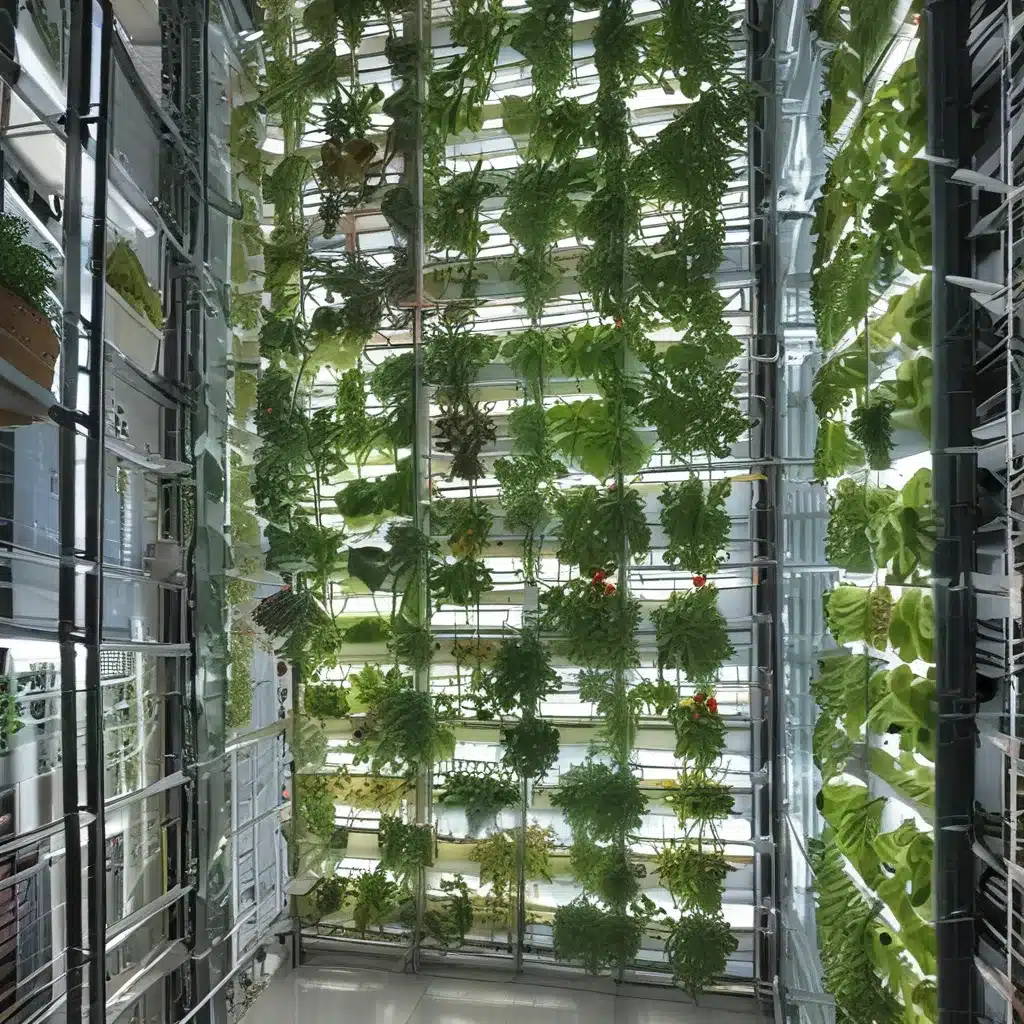
Vertical Farming: Revolutionizing Urban Food Production
The Rise of Vertical Farming: A Tale of Innovation and Sustainability
As I step into the sleek, modern facility of our local vertical farm, I can’t help but feel a sense of excitement and wonder. The towering shelves, stacked high with lush, vibrant greens and vegetables, are a far cry from the traditional image of agriculture. This is the future of food production, and it’s unfolding right before my eyes.
The world’s population is growing at an astounding rate, and with limited arable land, traditional farming methods simply cannot keep up. That’s where vertical farming steps in, offering a revolutionary approach to urban agriculture. By cultivating crops in vertically stacked layers, often in controlled environments like warehouses or skyscrapers, vertical farms are redefining the way we think about food production.
As I navigate through the maze of greenery, I can’t help but marvel at the impressive efficiency of this system. These vertical farming towers utilize cutting-edge technologies like hydroponics, aquaponics, and aeroponics, allowing them to produce up to 100 times more yield per square foot compared to traditional outdoor farms. And the best part? They do it all while using up to 70% less water and significantly reducing the need for pesticides.
Vertical farming has the potential to be a game-changer in the fight against food scarcity and environmental degradation. By localizing food production, these innovative systems can cut down on transportation costs and emissions, while ensuring a constant supply of fresh, nutrient-rich produce year-round, regardless of the season or weather conditions.
Harnessing the Power of Controlled Environments
One of the key advantages of vertical farming is the ability to precisely control the growing environment. Unlike traditional outdoor farms, where crops are at the mercy of unpredictable weather patterns and pests, vertical farms create an indoor oasis, where every factor – from lighting and temperature to water and nutrient levels – is meticulously monitored and adjusted to optimize plant growth.
As I stroll through the aisles, I can’t help but notice the intricate network of sensors and monitoring systems that keep a watchful eye on every aspect of the growing process. It’s like a well-choreographed dance, with each component working in harmony to ensure the plants receive exactly what they need to thrive.
Vertical farming towers, with their multi-level indoor farms, are particularly well-suited for densely populated urban areas, where traditional agriculture is often not feasible. By harnessing the power of hydroponics or aeroponics, these innovative structures enable the cultivation of a wide variety of crops, from leafy greens and herbs to tomatoes and strawberries, all without the need for soil.
As I pause to admire a row of lush, vibrant lettuce heads, I can’t help but wonder how this technology will continue to evolve. The advancements in LED lighting, climate control, and nutrient delivery systems are constantly pushing the boundaries of what’s possible, making vertical farming more efficient and cost-effective with each passing year.
Pioneering the Future of Sustainable Agriculture
As I delve deeper into the world of vertical farming, I’m struck by the sheer potential of this technology to revolutionize the way we approach food production. Not only does it offer a more sustainable solution to the growing global demand for fresh, nutritious produce, but it also has the power to transform urban landscapes and communities.
Imagine a future where city skylines are dotted with vertical farming towers, providing a steady supply of locally grown, pesticide-free produce to the surrounding neighborhoods. These urban agricultural hubs could become hubs of community engagement, educating and inspiring people about the importance of sustainable food systems.
Vertical farming is not just about growing crops; it’s about nurturing a profound shift in the way we think about food, the environment, and our role in shaping a more sustainable future. By embracing this innovative approach, we can work towards a world where every community has access to fresh, locally sourced produce, while reducing our environmental footprint and contributing to the overall health and well-being of our planet.
As I step back outside, I can’t help but feel a renewed sense of hope and optimism. The future of food production is unfolding right before our eyes, and it’s a future that’s greener, more efficient, and more equitable than ever before. Who knows what other remarkable innovations are waiting to be discovered in the realm of vertical farming? One thing is certain: the revolution is just getting started.
If you’re interested in learning more about how vertical farming can transform food production and sustainability, be sure to visit our website at ThornappleCSA.com. There, you’ll find a wealth of information, resources, and opportunities to get involved in this exciting and rapidly evolving industry.



